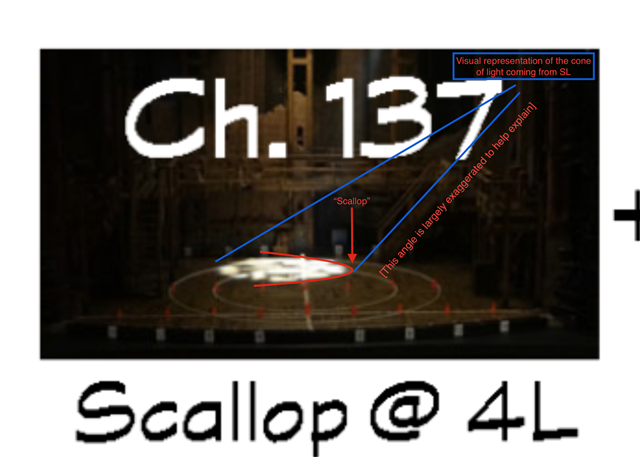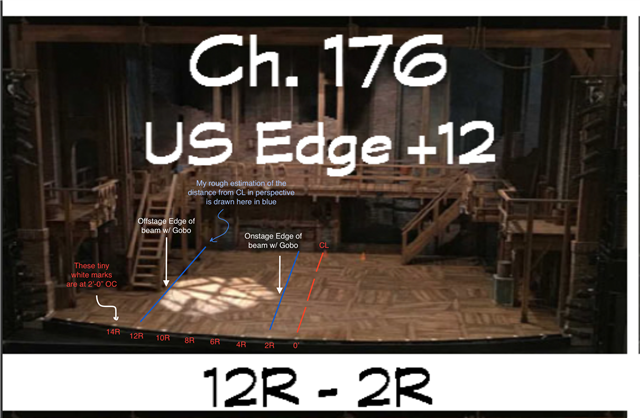Hi All I just had a quick question about the conventional focus paperwork,
For instants Ch.179
US Edge +20 ( this means that the Upstage edge of the gobo is at +20 feet correct?
under the picture there is 11R - 2R ( dose this mean that the centre of the Gobo is at 11 feet upstage and 2 feet stage right?
With Ch. 148 it's 8 feet upstage with the Scallop @ 4 feet stage right, What is a Scallop?
Going to be doing this with some students and what to be sure I have the right answers to their questions
thanks John






